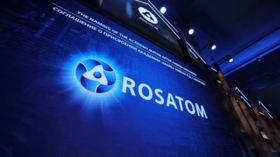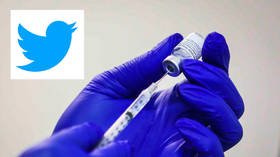Looking into the future: Rosatom education center named after Andrei Sakharov

A ceremony was held in Nizhny Novgorod, Russia to name the Mayak Academy after Nobel Peace Prize winner Andrei Sakharov.
In a ceremony that took place on November 10 and was sponsored by Rosatom, the Mayak Academy based in Nizhny Novgorod was named after prominent scientist and creator of the Soviet hydrogen bomb Andrei Sakharov. The event concluded the celebration of the centenary of Sakharov’s birth.
The event was attended by President of the Russian Academy of Sciences Alexander Sergeev; Director General of Rosatom Alexey Likhachev; Governor of the Nizhny Novgorod region Gleb Nikitin; and Andrei Sakharov’s granddaughter Marina Sakharova-Liberman. The participants noted Sakharov's invaluable contribution to the country's national security, as well as to the development of the nuclear industry and fundamental science.
The Sakharov Academy
Head of Rosatom State Corporation Alexey Likhachev addressed the audience at the ceremony. In his speech, he noted that the name of Andrei Sakharov is “forever associated with the greatest scientific discoveries of the 20th century.”
“His research was key to boosting Russia’s defense and security; it was a breakthrough for nuclear science and gave a powerful impetus to the Soviet nuclear program,” Likhachev said.
He explained that the proposal to name Rosatom’s new training and cultural center in Nizhny Novgorod – the Mayak Academy – after Sakharov was a way to “pay tribute to this outstanding person.”
The Mayak Academy is a project launched by the Rosatom State Corporation. It’s an education center that occupies a landmark building on the Nizhnevolzhskaya embankment – years ago, the building housed a bank run by the Rukavishnikov merchant family. The venue will host lectures, workshops, exhibitions and other events.
It was in the Nizhny Novgorod region – in the town of Sarov, known as Arzamas-16 during the Soviet period – that Andrei Sakharov led a team of scientists to develop and build the Soviet Union’s first thermonuclear bomb. The new weapon was successfully tested on August 12, 1953. In the same year, Sakharov defended his doctoral thesis and was elected member of the USSR Academy of Sciences.
In the following years, he worked on improving the hydrogen weapon. In 1954, Sakharov proposed a new design for the bomb. 1955 marked a successful test of the new model – this moment is considered to be the final milestone in the development of thermonuclear weapons.
Today, Sarov is home to the Russian Federal Nuclear Center – All-Russian Scientific Research Institute of Experimental Physics.
‘He had foresight and paved the way for the future’
The initiative to name the Mayak Academy after the great Soviet scientist was first proposed by Rosatom. This was noted by President of the Russian Academy of Sciences Alexander Sergeev, who kicked off the event. In his opening remarks, he recalled that in 2021, numerous events have been held in Russia and abroad to celebrate the 100th anniversary of Sakharov’s birth. However, the idea to name the Mayak Academy after the prominent Russian scientist and activist came spontaneously. The initiative was supported by both the Anniversary Organizing Committee and the Russian authorities.
“This proves that everyone in this country – scientists, regular citizens and the government – are united in their attitude towards Andrei Sakharov. This man facilitated the creation of Russia’s nuclear energy sector and bolstered the country’s key defense capability – its nuclear shield. Andrei Sakharov was, without a doubt, a visionary – he had foresight and paved the way for the future. The Mayak Academy also provides a glimpse into the future,” said Sergeev.
The “father” of the most destructive weapon in the history of mankind, Andrei Sakharov later became an advocate of disarmament and human rights, and received a Nobel Peace Prize.
That said, with nuclear and thermonuclear weapons added to the Soviet arsenal, balance could be maintained between superpowers. For decades, nuclear deterrence kept Moscow and Washington from engaging in direct warfare.
As Nizhny Novgorod region Governor Gleb Nikitin explained during the ceremony, Rosatom’s education center will use state-of-the-art technologies in its work and introduce interactive areas with free admission. Illustrating this, Nikitin referred to the International Science for Peace and Development Dialogue Forum, which was also scheduled for November 10.
Sakharov’s granddaughter Marina Sakharova-Liberman also spoke at the ceremony. She noted that her grandfather, in addition to being a talented design engineer, was also a theoretical researcher who made a major contribution to fundamental science.
Among other things, Sakharov invented a method for generating strong magnetic fields, proposed the concept of a controlled nuclear fusion reactor – the tokamak – and came up with the idea of muon-catalyzed fusion, which laid the foundation for an entire branch of physics.
“I hope and believe that the Mayak Academy, now named after Sakharov, will help bring forth a new generation of outstanding scientists and engineers,” Sakharova-Liberman said.
Think your friends would be interested? Share this story!














